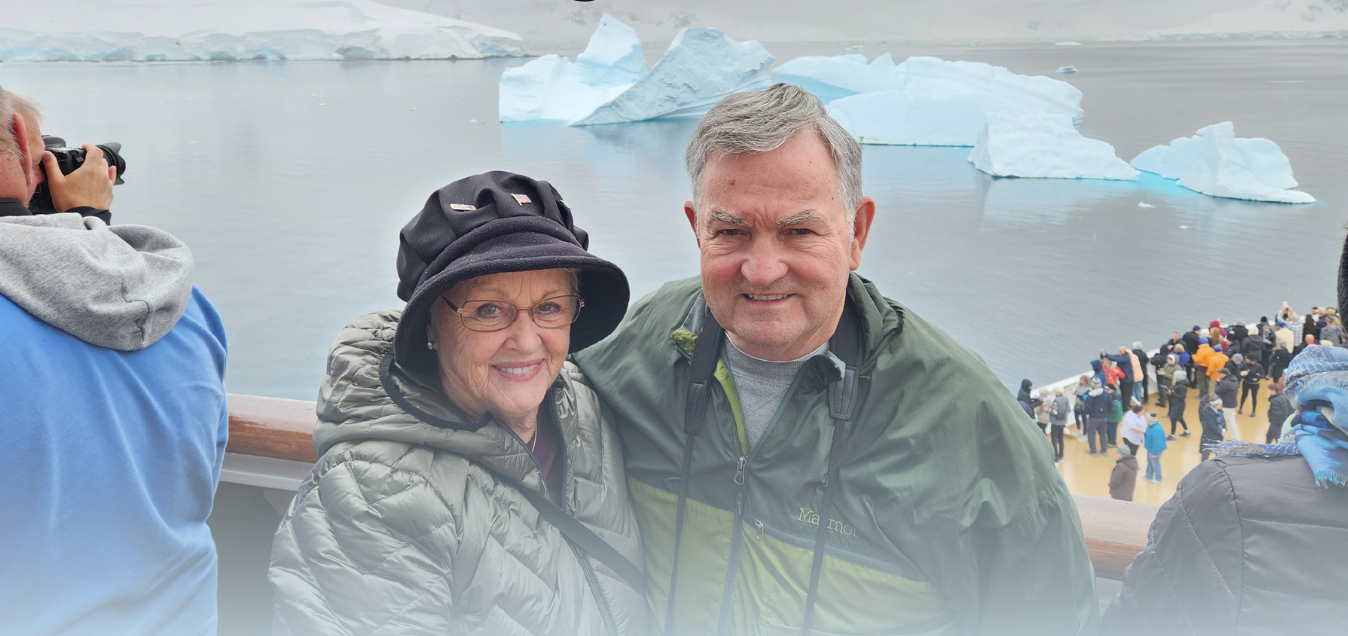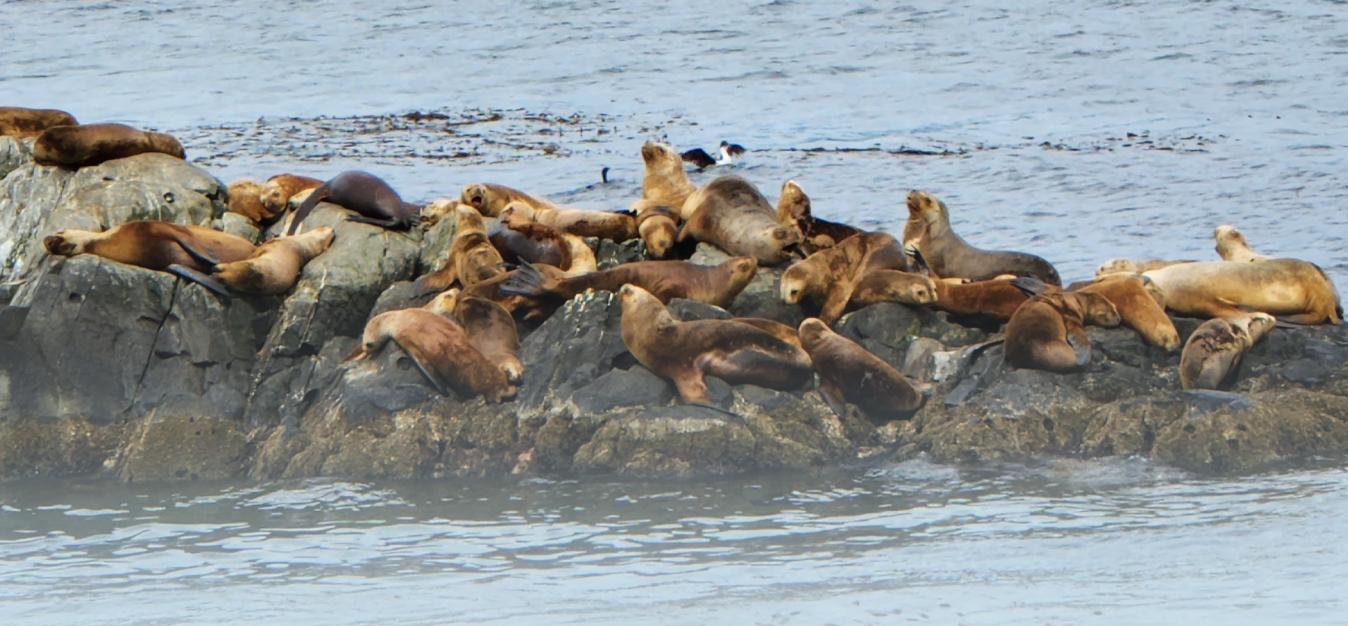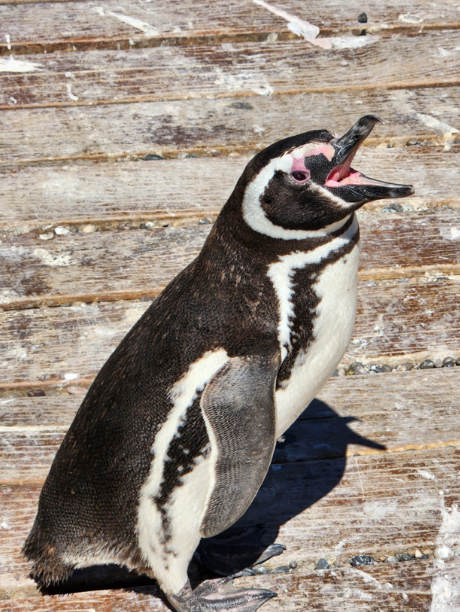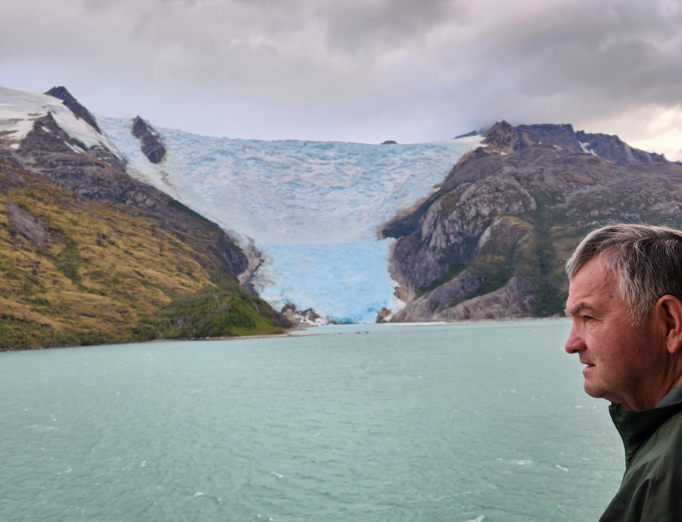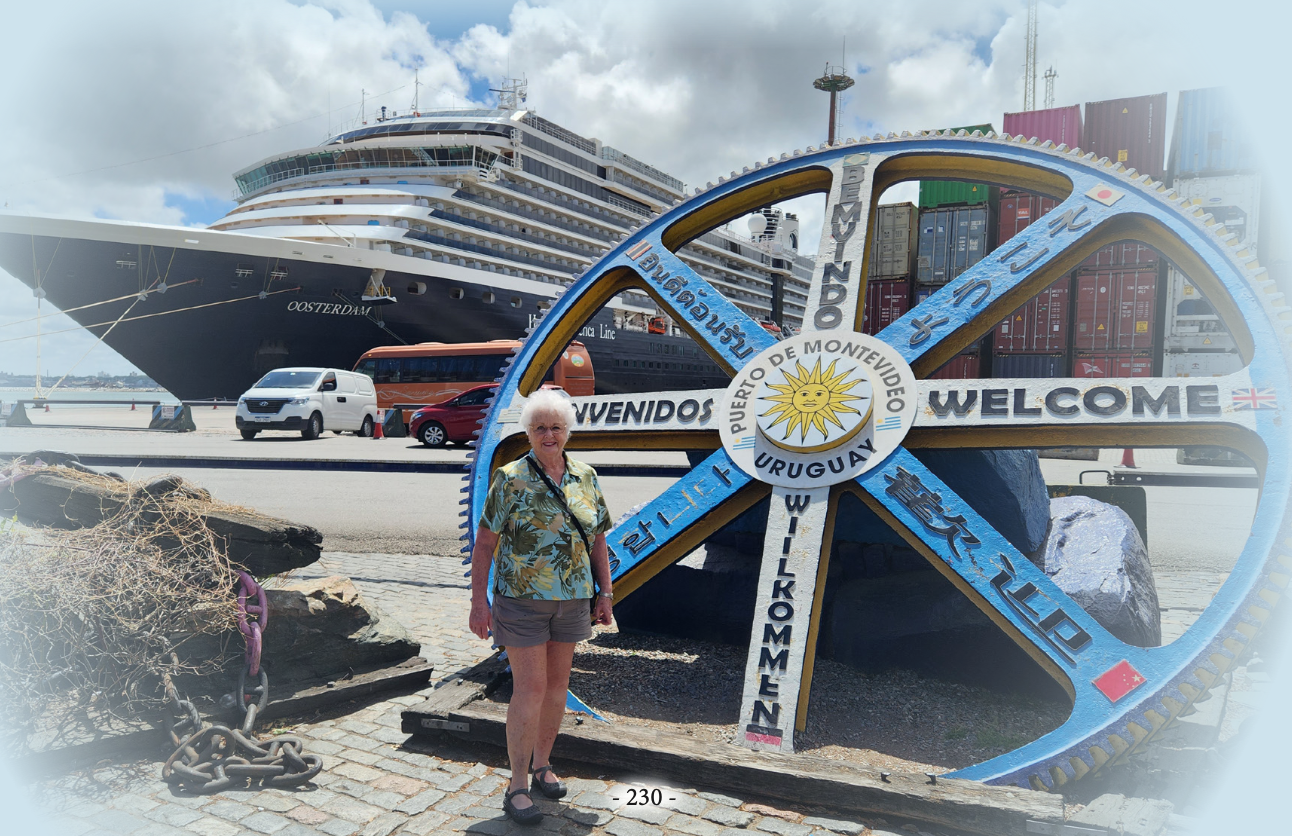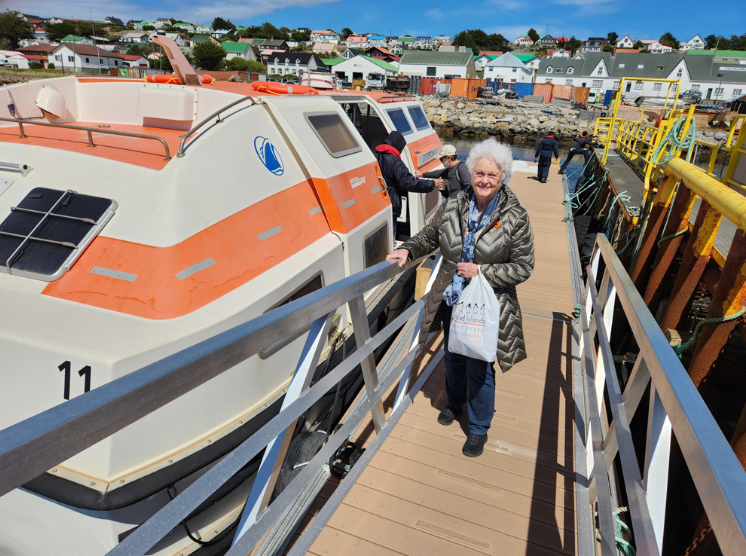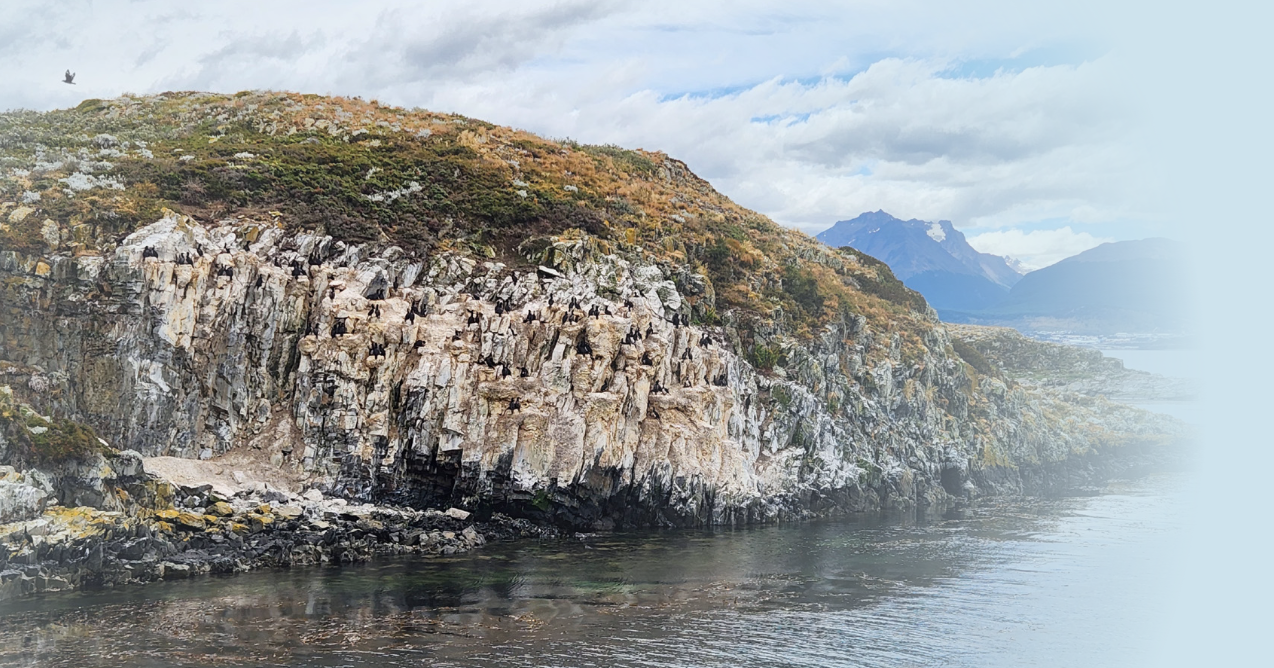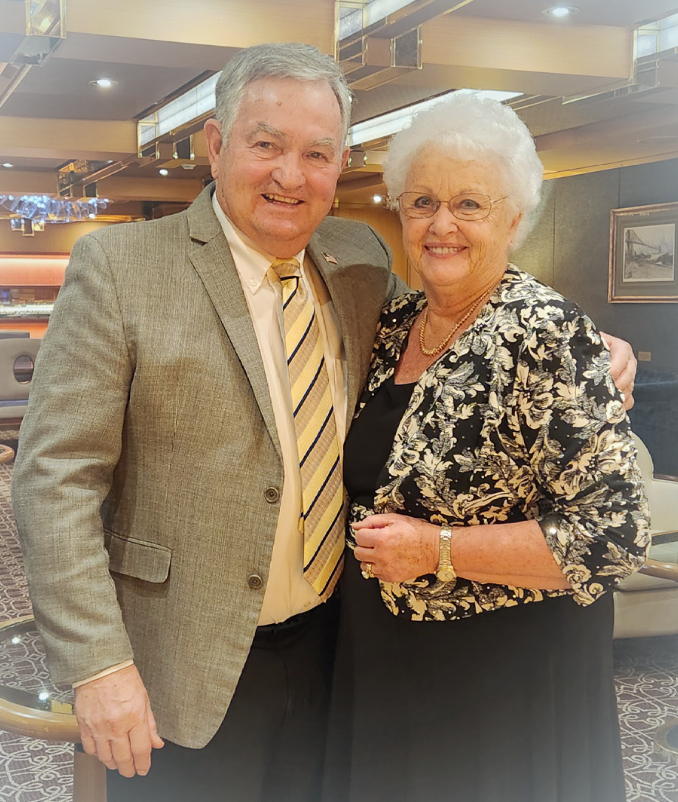The Great White Continent, Antarctica - Our Last Continent, Don & Mary Harter
We had booked a cruise to Antarctica several years ago because we had seen every other continent while hunting but never been on this one. And probably because no hunting is available. Well, our first planned cruise was cancelled due to Covid and we started spending time in Florida. In September of 2022, a hurricane hit Ft. Myers Beach where we like to stay and in early October, the people we were going to rent from emailed saying their place probably couldn’t be rented in January when we wanted it. The elevators didn’t work, the pool was full of sand, restaurants and other businesses were closed and the beach that was left wasn’t very safe to walk on. A flyer came from Holland America that same day so we called and rebooked our Antarctician cruise.
On January 9, 2023, we flew to Santiago, Chile, to board the Oosterdam. After an overnight, we boarded and took off on our adventure which followed the path of early explorers in 1616. First stop at Puerto Montt was cancelled due to high seas. Second stop was Puerto Chacabuco and we took a tour to see a private park with the beautiful, Barba del Viejo waterfall, the virgin forests of Patagonia, and native dancers. We cruised Chilean fjords, saw Amalia and Brujo Glaciers, and then the Sarmiento Channel. On to Magellan Channel and Punta Arenas. We took an excursion to visit a mansion and cemetery and had snacks in the old warehouse district.
We sailed through the Cockburn and Beagle Channel. The Beagle Channel is named for the first ship to sail there, later made more famous as being the one of Charles Darwin.
We cruised Glacier Alley with its many beautiful glaciers that we could view right from our balcony beginning very early in the morning.
On to Ushuaia, Argentina, the southernmost town in the world where we cruised more of the Beagle Channel on a catamaran seeing many albatross, cormorants, and other birds, sea lions, and seals. This was on January 18, Don’s birthday, and he sure was celebrated with cupcakes, cake, special decorations, origami, flowers, cards, and much singing by staff, waiters, and our dinner neighbors on the ship. Our dinner neighbors were leaving a tender to the dock as we were waiting to get on one and they sang to Don right on the dock with hundreds of people watching.
The next day we cruised to Cape Horn and around the famous lighthouse at the southernmost point of the continent and the Drake Passage. We were at sea for two days before arriving at Deception Island in the Shetland Islands of Antarctica and then Palmer Station in the Lemaire Channel. We went through Neumayer Channel and Gerlache Strait in the evening. We saw many penguins, some walking up trails to rocky areas where they raise their young and many swimming right next to the ship plus numerous seals.
Every day in the Antarctic there are recaps and highlights of what we will see or have seen by the Antarctica Expeditions Team, Jim McParland and/or Dr. Neil Gilbert on the Main Stage. We see most of the sights from the balcony of our state room or sometimes hurry to the front deck on main deck or higher to see something on the other side of our ship. Sometimes it was very windy and you couldn’t go out on deck. The doors would be blocked. We sighted penguin families on the ice floes. We saw blue eyed Adelie, chin strap, gentoo, and king penguins, humpback and minke whales feeding on the krill. We also visited Paradise Harbor, Neko Harbor, Cuverville Island, and more of the Gerlache Strait covering a lot of the peninsula. We saw a huge rookery of penguins with a path to the shore and some red coated people were visiting them. Many boats and ships in this area. There are 40 places around Antarctica where you can land in small boats and go ashore with proper permits.
On to Errera Channel, Puerto Orne, Wilhelmina Bay and Charlotte Bay. It snowed a little everyday while in the glaciers. Most of our service workers are Filipinos and, if they are new, have never seen snow. They have to keep shoveling off the front bow so it doesn’t get slippery and they have fun doing it. They even made a snowman. When the ship gets close to an ice berg they use the thrusters to stay far enough away. An ice berg has to be at least 10 feet tall to be classed as an ice berg and usually 89 percent is underwater. Some ice bergs are much larger than houses and some glaciers are larger than states. Antarctica is larger than the United States. 70 percent of the fresh water in the world is here. There are many classifications of ice like brush ice, pack ice, growler ice, pancake ice, bergy bits, nilas, and ice bergs. It never got dark while we were here, only twilight for a short time. They have southern lights like the northern lights but they only show during the dark time of the year. And, believe it or not, there is no sign of global warming.
We drove past Elephant Island but couldn’t go in the bays because it was too rough and too many ice bergs. This is where Ernest Shackleton sank the Endurance while trying to cross Antarctica over 100 years ago. Shackleton was very successful with many other discoveries on the continent but had trouble around Elephant Island and got caught in the ice and his ship was too damaged and sank. His whole crew survived in life boats on the island for many months until they could travel for help to South Georgia. In 2019, the Weddell Sea Expedition searched for the Endurance, and again searching in 2022, found the ship in the same condition as when it sank after being submerged for 107 years. Our speaker, Dr. Gilbert was part of the search team. Shackleton’s motto was, “Better to be a live donkey than a dead lion”.
On to the Falkland Islands and Port Stanley which we heard about in 1982 when Argentina and Britain were fighting for it. Our tour guide was 9th generation on the island and we learned they have very few inhabitants with over seven sheep per person. Besides the many sheep ranches, it has moorlands, pubs, and red phone booths. It is really just a stopping off point before traveling on to Antarctica. Several ships were sunk in the cove during the war and they have an extensive museum. The island governs itself now but the British protect it.
We were at sea a day and then on to Puerto Madryn, Argentina where we toured the whole day driving to the Punta Tombo Reserve located on the Atlantic Ocean where Magellanic penguins come to raise their young. We walked about a mile and a half along the ocean on gravel and a boardwalk seeing penguins nesting in burrows all over. The young are almost to the adult stage and many penguins walked right on our path. We also saw wild guanaco, llama like native animals. Whales come to this area to raise their young but not at this time of the year.
We had many presentations on stage telling us what we would see, information of the history of Holland America, several presentations from the British Broadcasting Company, Blue Planet in Concert, piano presentations, a magician, tango and gaucho dancing, a presentation of the solar system and 10 pm meetings on the back deck to view the southern sky, especially the southern cross, alpha centauri and beta centauri. The southern cross is featured on the flag of several countries.
On to Punta Del Este and Montevideo in Uruguay and then our last port, Buenos Aires, Argentina, the Paris of South America. We took a tour of the highlights.
Great time, made many friends and memories, certainly glad we did this trip! Now we have seen every continent.

